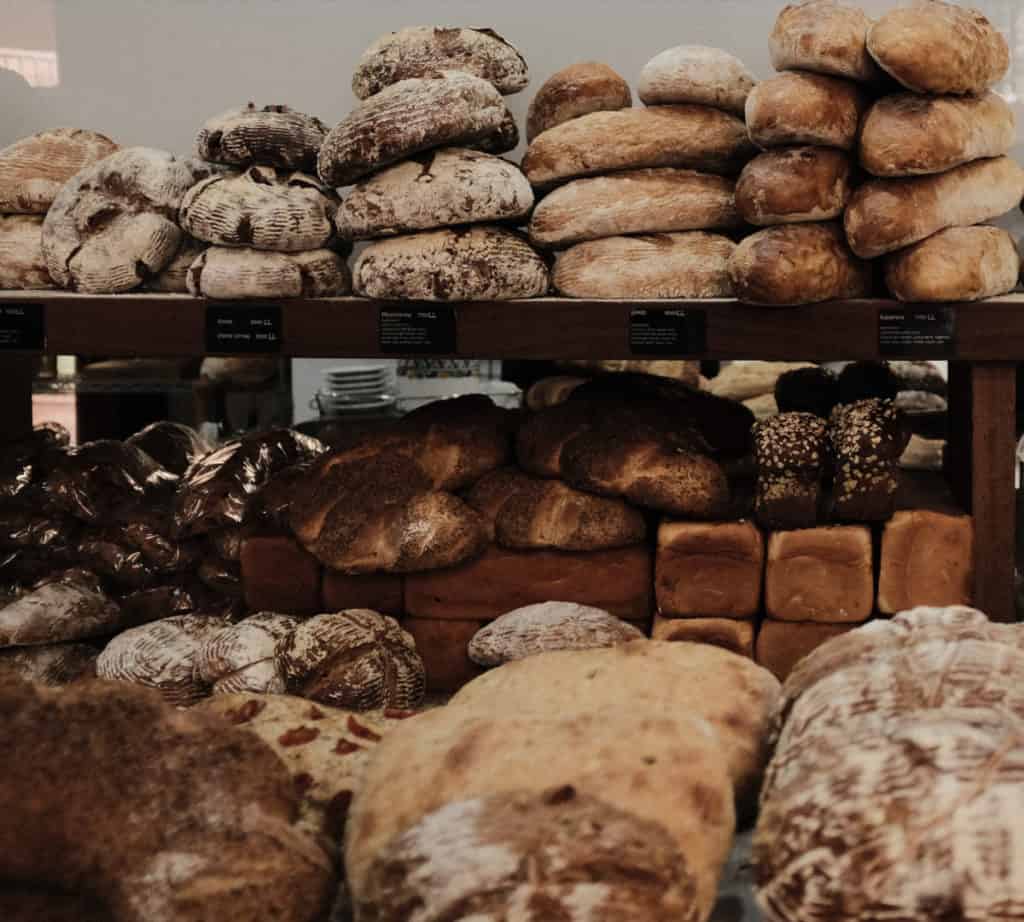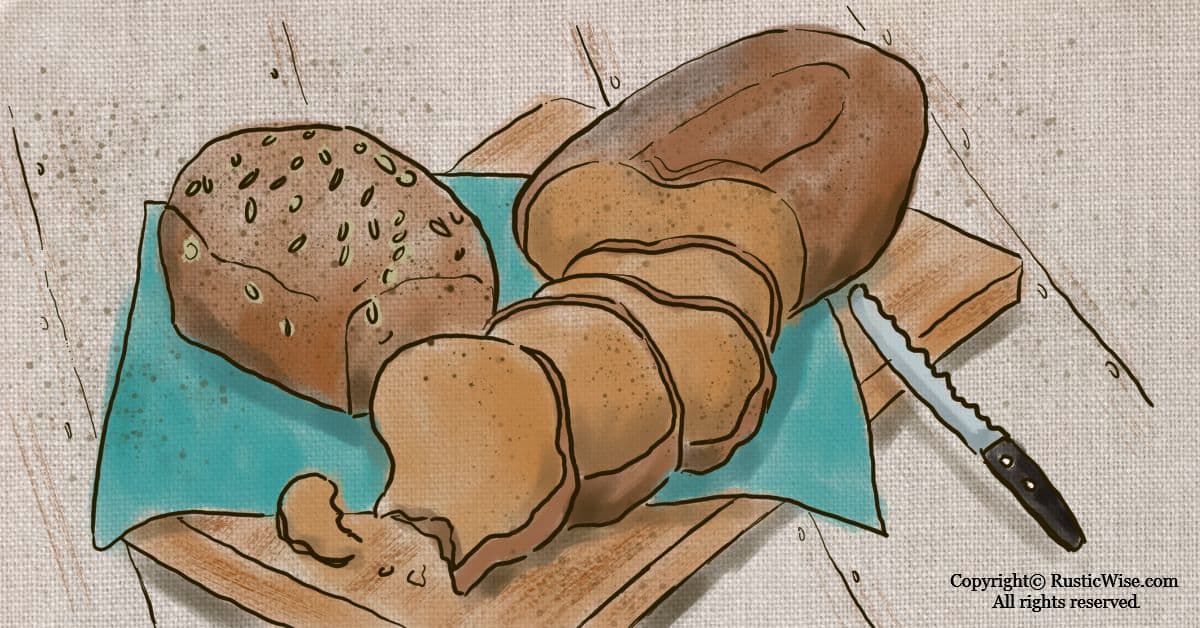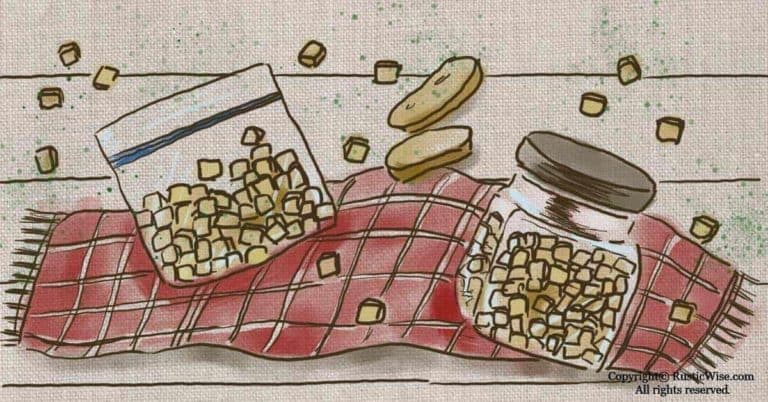Why Does Sprouted Bread Need To Be Refrigerated? Here’s the Lowdown
There are so many choices when it comes to bread—white, brown, wholewheat, wholegrain, and now, sprouted bread. At the grocery store, you’ll find some types of sprouted bread in the freezer aisle. Why does sprouted bread need to be refrigerated? This is because most store-bought sprouted breads are preservative-free. And technically, the best place to keep sprouted bread for long-term storage is actually the freezer, not the refrigerator. You can also keep sprouted bread at room temperature for up to 5 days.
While it may seem like a good place to store bread, many say that the fridge is actually the last place you’ll want to place a fresh loaf in. This is because the fridge tends to dry bread out. And nobody wants that, right?
Let’s look at what makes sprouted bread different from regular bread, sprouted grains benefits, and the shelf life of a loaf of sprouted wheat bread.
A closer look at sprouted whole grains
If you’re a bread-lover who’s looking to cut down on carbs, fresh sprouted bread may be the answer you’re looking for.
Sprouted bread is made of sprouted flour. This consists of whole grains that are allowed to sprout or germinate prior to being ground into flour. The entire grain is added to bread for added nutrients.
The sprouting process breaks down phytic acid in seeds which enables you to maximize the nutrients of the particular foods being sprouted. When sprouted, a seed’s nutrients become unlocked and are more easy for the body to absorb and digest.
True sprouted breads at the grocery store contain no added refined flours, and most have no preservatives.
Sprouted bread is touted for its health properties: high in protein, a rich source of fiber and vitamins, and lower in carbohydrates than your average loaf of bread. Most sprouted breads are also vegan.
Common sprouting grains include amaranth, barley, millet, lentils, soybean, and spelt. A few popular brands of sprouted bread include Food for Life Ezekiel 4:9, Silver Hills, Angelic Bakehouse, and Dave’s Killer Bread.
How long does sprouted bread last?
If you have a loaf of store-bought sprouted bread, follow the “Best By” or “Use By” date.
The average sprouted grain bread is good for up to 5 days at room temperature. However, to really extend the shelf life of your healthy loaf of bread, the U.S. The Department of Agriculture (USDA) says to store it in the freezer for up to 3 months.¹
If you’re planning to pop your loaf of sprouted bread in the fridge, it keeps up to 2 weeks. Although as we mentioned above, keeping your bread in the fridge is not ideal as it dries out.
Better to pop it right in the freezer if you’re not planning on finishing it within 5 days.
If you’re planning to defrost a whole loaf of bread, Silver Hills Bakery, makers of sprouted bread, says it keeps up to 9 days from time of thaw.²
| Storage Method | Shelf Life |
|---|---|
| Room temperature | Up to 5 days |
| Refrigerator (not recommended) | Up to 2 weeks |
| Freezer | Up to 12 months, but best consumed within 3 months |
Does sprouted bread need to be refrigerated?
No, you don’t need to keep sprouted whole grain bread in the fridge. While refrigerating bread does extend the shelf life, it has a negative side effect: it makes your loaf dry.
The cooler temperature of a refrigerator causes the recrystallization of starches, which leads to stale, dry bread.
How to keep sprouted bread fresh
Since your store-bought loaf of sprouted bread costs a pretty penny, you’ll want to keep it fresh for as long as possible. Here are a few tips:²
- Keep in a cool, dry, dark place at room temperature: If you’re planning on eating your loaf of bread within 5 days, keep it in a dry, dark place away from sunlight. Bread boxes are your friend. If you don’t have a bread box, consider keeping it in your pantry.
- Keep the bag sealed: After grabbing a slice or two, remember to tightly seal the bag to prevent your loaf from drying out.
- Freezing and defrosting: Ensure you squeeze out any excess air and store in a tightly sealed bag or container in the freezer for up to 3 months. When you’re ready to use your frozen bread, grab a slice or two and put it straight into the toaster for ready-to-eat bread. To defrost a whole loaf, let it thaw on the countertop for 10-15 minutes.

Is sprouted grain bread really better for you?
Sprouting grains is a process that maximizes the nutritional content of the seed. Young sprouts typically have a higher nutritional content than the mature version of the same plant. We’re big fans of sprouting at home.
Sometimes it’s best to let the numbers do the talking.
Here’s a roundup of nutritional information from the USDA’s Food Data Central comparing white bread (Wonderbread)³ with Dave’s Killer Bread (Organic Sprouted Whole Grains)⁴ per 100 grams/serving.
As you can see below, each 100 grams serving of Dave’s sprouted bread contains fewer calories and carbohydrates. You’ll also see that sprouted bread is a rich source of:
- Protein
- Dietary fiber
- Calcium
- Additional nutrients not found in white bread including magnesium, phosphorus, potassium, selenium, and vitamin K.
Table: Nutrition facts and comparison of white bread vs. sprouted bread per 100 grams/serving
| White bread (Wonderbread) | Sprouted bread (Dave’s Killer Bread, Organic Sprouted Whole Grains) | |
| Energy | 261 kcal | 243 kcal |
| Protein | 8.7 g | 10.81 g |
| Total lipid (fat) | 3.26 g | 2.7 g |
| Carbohydrate, by difference | 52.17 g | 40.54 g |
| Fiber, total dietary | 2.2 g | 8.1 g |
| Sugars, total including NLEA | 6.52 g | 10.81 g |
| Calcium, Ca | 43 mg | 54 mg |
| Iron, Fe | 3.13 mg | 1.95 mg |
| Sodium, Na | 543 mg | 405 mg |
| Vitamin C, total ascorbic acid | 0 mg | 0 mg |
| Thiamin | 0 mg | 0 mg |
| Riboflavin | 0.296 mg | 0.092 mg |
| Niacin | 3.478 mg | 3.243 mg |
| Vitamin A, IU | 0 IU | 0 IU |
| Fatty acids, total polyunsaturated | 1.09 g | N/A |
| Magnesium, Mg | N/A | 86 mg |
| Phosphorus, P | N/A | 216 mg |
| Potassium, K | N/A | 216 mg |
| Zinc, Zn | N/A | 1.62 mg |
| Copper, Cu | N/A | 0.216 mg |
| Manganese, Mn | N/A | 2 mg |
| Selenium, Se | N/A | 28 µg |
| Pantothenic acid | N/A | 0.541mg |
| Vitamin B-6 | N/A | 0.216 mg |
| Vitamin K (phylloquinone) | N/A | 4.3 µg |
What’s the difference between sprouted bread and whole wheat bread?
While sprouted bread and whole wheat are quite similar, they differ in the way they’re made.
Whole wheat bread is made of unsprouted, whole wheat kernels. Sprouted breads have the added benefit of time, allowing grains to sprout before being ground into flour and baked into bread.
Regular whole grains are found in whole grain bread, a step up from whole wheat bread. As the name implies, whole grain bread contains the entire grain left intact. While some whole wheat bread is made of whole grain flour, some varieties contain a blend of white and wheat flour.
While whole wheat bread is no slouch in the health department, sprouted bread has a few advantages:
- Compared to other types of breads, sprouted grain has a lower glycemic index meaning it doesn’t cause a spike in blood sugar levels.
- Sprouted bread is easier to digest, according to The Whole Grains Council.⁵
- Added nutrients as discussed above.
White bread, made of refined grains and flour, is the least healthy option.
Why does sprouted bread need to be refrigerated: the takeaway
Why does sprouted bread need to be refrigerated? Because it lacks the preservatives common in many manufactured breads. And technically, for optimal shelf life, put that healthy loaf of bread in the freezer, not the refrigerator.
Related questions
What’s Ezekiel bread?
You may have heard friends raving about Ezekiel bread. Is Ezekiel bread the same thing as sprouted bread? Ezekiel bread is a type of sprouted bread. Food for Life’s Ezekiel 4:9 bread is a popular store-bought bread.
The recipe for this sprouted bread is taken from Scripture Ezekiel 4:9, “Take also unto thee wheat, and barley, and beans, and lentils and millet, and spelt and put them in one vessel…”
Is sourdough bread a type of sprouted bread?
No, sourdough bread is not a type of sprouted bread. Sourdough bread is made using a fermented dough that is created by mixing wheat flour and water and allowing it to naturally ferment over a period of time. This fermentation process gives the bread its distinct tangy flavor and chewy texture.
On the other hand, sprouted bread is made from grains that are sprouted or germinated, which involves soaking the grains in water until they begin to sprout, and then grinding them into flour. Sprouted bread is known for its higher nutritional value and easier digestibility compared to regular bread, but it doesn’t have the same sourdough flavor profile.
Is sprouted whole grain bread gluten free?
No, the average loaf of sprouted whole grain bread is not gluten-free. Gluten is a protein found in wheat, barley, and rye, and sprouted whole grain bread is typically made from wheat or other gluten-containing grains. While sprouting grains can increase their nutrient content and make them easier to digest, it doesn’t remove the gluten, and most loaves are still a grain product.
If you’re someone with gluten sensitivities or celiac disease, you should opt for bread made from gluten-free grain flour such as rice, quinoa, or millet.
What is essene bread?
Essene bread is a type of unique bread that’s made from sprouted grains. It’s a traditional bread that dates back to ancient times and is believed to have originated from the Essenes, a Jewish sect who lived in the Middle East in ancient times.
Essene bread is made by sprouting grains, typically wheat or barley, and then grinding them into a paste. The paste is then shaped into loaves or rounds and baked at a low temperature to preserve the nutrients and enzymes in the sprouted grains.
👉 If you like this post, see our Timeless Food Storage and Preservation Guide.
Would you like more timeless tips via email?
Fun tips to help you live an independent, self-sustaining lifestyle. Opt-out at any time.


References
- U.S. Department of Agriculture, Ask USDA, https://ask.usda.gov/s/article/How-long-can-I-store-bread. Accessed November 2023.
- Silver Hills Sprouted Bakery, How to Keep Sprouted Whole Grain Fresh, https://silverhillsbakery.ca/how-to-keep-sprouted-whole-grain-fresh/. Accessed November 2023.
- U.S. Department of Agriculture, FoodData Central, Wonderbread, White bread, https://fdc.nal.usda.gov/fdc-app.html#/food-details/471565/nutrients. Accessed November 2023.
- U.S. Department of Agriculture, FoodData Central, Dave’s Killer Bread (Organic Sprouted Whole Grains), https://fdc.nal.usda.gov/fdc-app.html#/food-details/369113/nutrients. Accessed November 2023.
- Whole Grains Council, Sprouted Whole Grains, https://wholegrainscouncil.org/whole-grains-101/whats-whole-grain-refined-grain/sprouted-whole-grains. Accessed November 2023.

Author: Theresa Tesolin
Theresa is co-founder of RusticWise. She helps people unleash their inner DIY spirit by encouraging them to get dirty and make or grow something from scratch.









